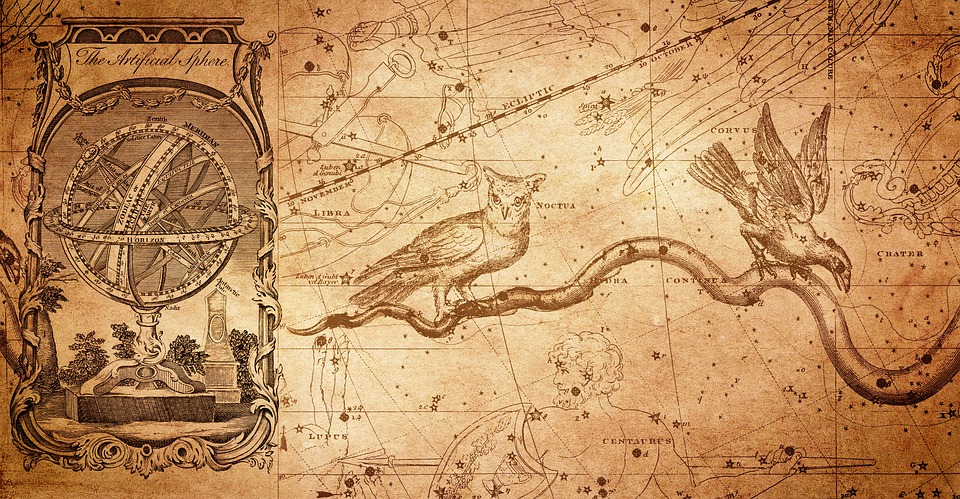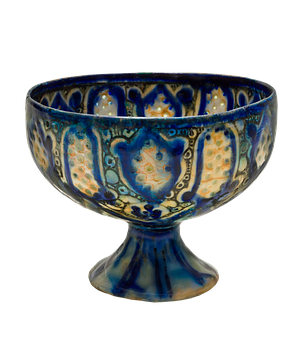Region: England
Time Period: Unknown
References in Literature: None Found
Sources: Mysterious Britain
Tag: Britain
Gwiber
Region: Wales
Time Period: Unknown
References in Literature: None Known
Sources: Giants, Monsters and Dragons pg 161, Mysterious Britain
Belisama
In Celtic Mythology, Belisama (also Belesama, Belisma) was a goddess worshipped in Gaul and Ancient Britain. She was connected with lakes and rivers (the river Ribble in England was known by the name Belisama in Roman times), fire, crafts and light, and she was the consort of Belenus.
Belatu-Cadros
In Celtic Mythology, Belatu-Cadros (“fair shining one” or “fair slayer”), also rendered Belatucadros or Belatucadrus, was a deity worshipped in northern Britain, particularly in Cumberland and Westmorland. He may be related to Belenus and Cernunnos, and was equated in the Roman Britain period with Mars. He appears to have been worshipped by lower-ranked Roman soldiers as well as by Britons.
Devil’s Dyke
by Micha F. Lindemans
The Devil’s Dyke – A Sussex folktale
The Devil was angry at the conversion of Sussex, one of the last counties to be converted from Paganism, and especially at the way churches were being built in every Sussex village. So he decided to dig right through the South Downs, a range of hills along the south of Britain. He swore that he would dig all the way through the hills to let the sea flood Sussex in a single night and drown the new Christians. He started inland near the village of Poynings and dug furiously sending huge clods of earth everywhere. One became Chanctonbury hill, another Cissbury hill, another Rackham Hill and yet another Mount Caburn.
Joseph of Arimathea
by Brian Edward Rise
In the New Testament, Joseph is a rich man who lays Jesus’ body in the tomb after procuring it from Pilate.
There is an account of his imprisonment and deliverance by the risen Christ in an apocryphal work, the Acts of Pilate. Joseph by Robert de Boron and the Estoire del Saint Graal elaborate this tale. Joseph, it is said, came into possesion of the Holy Grail and subsequently learned its mysteries from Christ. The vessel also sustained the old man during his long imprisonment. Upon his release by Vespasian, he sets off with a party of companions (some say Lazarus and Mary Magdelene) on a set of divinely guided treks that eventually bring the Grail to Britain. There is a dispute amongst romancers as to whether Joseph actually made it to Britain and they prominently feature a son named Josephe or Josephus, who actually does set foot on British soil. Joseph himself is the prototypical Grail-keeper and figurative ancestor of all after him down to Pelles and Galahad.
Gildas
by Brian Edward Rise
Northern monk who lived in the first half of the sixth century. He is the author of De Excidio Britanniae (“On the Ruin of Britain”), usually dated to the 530-40’s. For the most part it is a condemnation of British kings and church leaders of his own time. The prelude, however, is an outline of British “history” from the first century onward. His goal is not history but rather a list of the misdeeds of his own people that led to the invasion by the Saxons.
Corbenic
by Brian Edward Rise
In the Vulgate Cycle, the mysterious, magical castle where the Fisher King keeps the Grail. It is here that Galahad rejoins the broken sword in the Queste del Saint Graal. In Malory, Lancelot and Bors travel to Corbenic but the Grail is not fully revealed to them. The name may be derived from “cor benoit” or “blessed body” a reference to the transubstantiation of the body of Christ in the sacrament of the Eucharist. Joseph of Arimathea took Jesus’ body from the cross and is said to have borne the Grail to Britain. This miraculous body is also said to inhabit the Grail.
Swan May
by Blair Colquhoun
According to the mythology of pre-Roman Britain, if you can get the feather of the Swan May, you can perform great feats of magic, including turning yourself into a swan. But beware the Swan May, if she should get her feather back, she can escape.
THE WELSH DRAGONS
Wales is symbolized by a red dragon. In the Mabinogion the tale of Lludd and Llewelys speaks of the struggle between this red dragon and the white dragon. It was long ago in the days of the Saxon invasions that this story takes place and it is no wonder that the white dragon is the invader, the Saxons, come to battle the red. As the symbolic struggle comes to a close, the two opposing dragons become drunk with mead. It is in this drunken state that they are both buried in a large stone coffin and placed to rest in the center of the island of Britain. The story goes that so long as the pair remain buried beneath Oxford the island will be protected from invasion.







